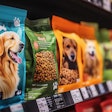As mentioned in the September 2016 issue of Petfood Industry magazine, the Association of American Feed Control Officials (AAFCO) recently adopted a new definition and guidelines for use of the term "human grade" on pet food labels. While many in the industry are eager to incorporate the term in their labeling, its implementation is proving difficult for some.
The definition appears clear and succinct. It reads:
“Human Grade: Every ingredient and the resulting product are stored, handled, processed and transported in a manner that is consistent and compliant with regulations for current good manufacturing practices (CGMPs) for human edible foods as specified in 21 CFR Part 117.”
The accompanying guidance further explains that this use is solely applicable to the product as a whole; i.e., that even "made with human grade ingredients" is false and misleading unless the product itself fully conforms to the rules. Further, because the product is ultimately intended for animals, that fact must be made crystal clear, so the words "human grade" on the label and labeling cannot exceed the size of the species designation statement; e.g., "dog food" or "for cats."
Part 117 of the Code of Federal Regulations is a newly promulgated section of the regulations under the US Food and Drug Administration (FDA), necessary to implement aspects of the Food Safety Modernization Act (FSMA) as it pertains to food for human consumption. In fact, it is so new that for some smaller firms the need for compliance with the rules is years away (in the interim, the existing CGMP regulations for human foods under 21 CFR 110 will still apply). Newly added is Part 507, which implements similar but decidedly different regulations intended to apply to food for animals. However, for those seeking use of the term "human grade," the human food regulations must be followed.
Navigating the necessary documentation
Documenting that each ingredient in a pet food is of human quality is relatively straightforward with the proper paperwork. For most non-meat and poultry ingredients, this could include specification sheets from the supplier indicating that the ingredient purchased is intended for use in human food. Words such as "for human consumption" or "meets 21 CFR 117" explicitly on the document is helpful language, as opposed to a more generic "meets applicable regulations" or "conforms to the Federal Food, Drug and Cosmetic Act." These latter phrases could apply to animal feed ingredients, as well. With respect to sources of meat and poultry ingredients, a mark of inspection by the US Department of Agriculture (USDA) Food Safety and Inspection Service will also amply indicate that the ingredient is "fit for human consumption" as required in the guidance.
Similar documentation from transportation companies, warehouses and other handlers of the pet food product can support statements of compliance with 21 CFR 117. However, the major sticking point for most firms appears to be the demonstration that the facility that is manufacturing the pet food product is in full compliance with FDA regulations for human food. This is because of jurisdictional issues between USDA (which regulates meat and poultry for human consumption) and FDA (which regulates everything else).
With the exception of some treat items like doggie cookies, the majority of pet products contain at least some meat or poultry ingredients. However, even when made in a USDA-inspected plant, USDA personnel simply won't inspect the manufacture of products intended for pets, hence they are not human edible by definition. Thus, pet product manufactures must obtain further documentation that the product also conforms to FDA human food requirements.
Compliance and other challenges
The guidance indicates the need for documentation that the facility is allowed to produce human food. Theoretically, this could include facility licenses or permits, or results of inspections by the appropriate public health authorities (which varies by jurisdiction). The trouble is, obtaining those documents has proven problematic. State feed control officials do not have the authority to inspect for compliance with human food requirements or to issue such licenses/permits, and the public health officials are often reluctant to do so for foods not intended for humans.
As a result, the "human grade" pet food manufacturer gets stuck in a quandary of regulatory discrepancies. While many state feed control officials may empathize with the manufacturers' dilemma, enforcement of this claim is left to each individual state feed control official, so manufacturers must conform to the demands of the most stringent state if intending to distribute nationally. Hopefully, a resolution agreeable to all can be reached as more and more pet food companies seek use of the claim.
For more insights by Dr. Dzanis


















